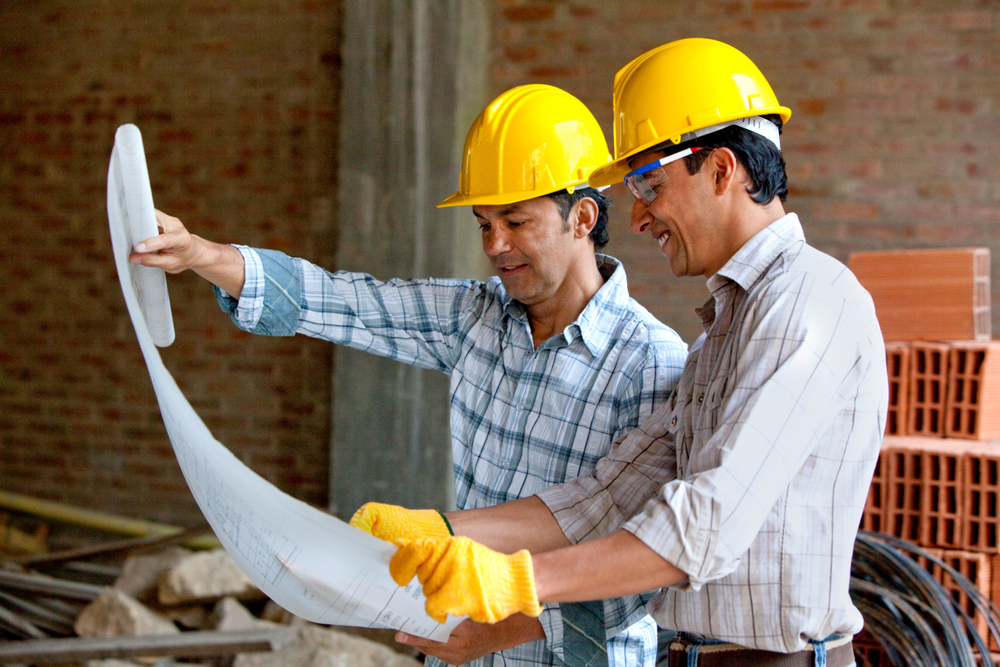Subsidence Sinking Your Home? Foundation Repair Solutions
Is your home showing signs of distress – cracks in the walls, doors sticking, or floors sloping? If you live in an area prone to soil subsidence, the culprit could be right beneath your feet. Don't worry; understanding the problem is the first step to finding a lasting solution. This comprehensive guide will equip you with the knowledge you need to protect your home from the devastating effects of subsidence.
Understanding Soil Subsidence and Its Impact on Foundations
Soil subsidence, the sinking or settling of land, is a significant threat to homes built in affected regions. It's crucial to grasp the underlying causes and how this geological phenomenon can wreak havoc on your property's foundation. The damage inflicted isn't just cosmetic; it can compromise the structural integrity of your entire house.
Subsidence isn't a single, uniform process. It can manifest in various forms, each with its own set of causes and characteristic effects. Factors like excessive groundwater extraction, mining activities, the compaction of loose or recently filled soils, and even natural processes like the dissolution of soluble bedrock (such as limestone) can all contribute to foundation settlement. Understanding the specific type of subsidence affecting your area is vital for choosing the right repair strategy. According to a 2024 report by the USGS, areas with significant groundwater depletion show a 40% higher rate of foundation issues compared to areas with stable groundwater levels.
The impact on your foundation can range from minor cracking to significant structural shifts. Hairline cracks might seem insignificant at first, but they can widen over time, allowing water to penetrate and further weaken the foundation. More severe settlement can lead to major structural problems, including uneven floors, misaligned walls, and even complete foundation failure. Addressing these issues promptly is essential to prevent further damage and maintain the safety and value of your home.
Identifying the Signs of Foundation Problems Due to Subsidence
Early detection is paramount when dealing with foundation settlement caused by soil subsidence. Recognizing the warning signs can save you considerable time and money in the long run. Don't ignore seemingly minor issues; they could be indicative of a larger underlying problem.
- Cracks in Walls and Foundation: Keep an eye out for cracks, especially those that are wider than 1/4 inch or that appear suddenly. Pay close attention to the pattern of the cracks; vertical, horizontal, or diagonal cracks can indicate different types of foundation stress.
- Sticking Doors and Windows: If doors and windows are becoming increasingly difficult to open or close, it could be a sign that your foundation is shifting and distorting the frame.
- Uneven or Sloping Floors: Use a level to check for any noticeable slopes or dips in your floors. Even a slight incline can indicate significant foundation movement.
- Water Damage: Leaks or water stains in your basement or crawl space can be a sign that water is penetrating through cracks in the foundation.
- Chimney Tilting or Separation: Check your chimney for any signs of leaning or separation from the house. This can be a telltale sign of foundation problems.
Foundation Repair Methods for Homes Affected by Subsidence
Once you've identified the signs of foundation damage, it's time to explore the available repair methods. The best approach will depend on the severity of the damage, the type of soil, and the specific cause of the soil subsidence.
Underpinning: A Deep Dive
Underpinning is a common technique used to strengthen and stabilize foundations that have been affected by subsidence. It involves extending the foundation deeper into the ground, reaching more stable soil layers.
Helical Piers
Helical piers are steel shafts with screw-like blades that are drilled into the ground to provide support for the foundation. They are particularly effective in areas with unstable soil or where deep excavation is not feasible. Helical piers can be used to lift the foundation back to its original position or to prevent further settlement.
Concrete Piers
Concrete piers are another type of underpinning that involves pouring concrete footings and piers beneath the existing foundation. This method is often used for larger or more complex foundation repairs.
Slabjacking and Polyurethane Foam Injection
Slabjacking, also known as mudjacking, is a process of lifting a sunken concrete slab by injecting a grout mixture beneath it. A more modern alternative is polyurethane foam injection, which uses expanding foam to fill voids and lift the slab. This method is often used to repair sunken driveways, patios, and sidewalks, and it can also be used to stabilize foundations in some cases.
The following table outlines common foundation repair methods used in subsidence zones:
| Repair Method | Description | Suitable For | Cost |
|---|---|---|---|
| Underpinning (Concrete Piers) | Extending the foundation deeper into stable soil using concrete. | Significant settlement, unstable soil. | Higher |
| Helical Piers | Steel shafts with helical blades screwed into the ground. | Unstable soil, limited access. | Moderate to High |
| Slabjacking | Injecting grout under the slab to lift and level it. | Minor settlement, void filling. | Moderate |
| Polyurethane Foam Injection | Injecting expanding foam under the slab to lift and stabilize it. | Minor settlement, void filling, lighter than grout. | Moderate to High |
The Importance of a Geotechnical Survey
Before embarking on any foundation repair project, it is absolutely crucial to conduct a thorough geotechnical survey. This investigation involves analyzing the soil composition, groundwater levels, and other factors that can contribute to soil subsidence. Without this information, you risk choosing an inappropriate repair method, which could ultimately lead to further damage and wasted money. A geotechnical survey will accurately determine the extent of the problem and the appropriate solution.
A qualified geotechnical engineer will conduct soil borings, laboratory testing, and other analyses to assess the soil's bearing capacity, permeability, and potential for settlement. This information will be used to develop a detailed report that outlines the causes of the subsidence and recommends the most effective repair strategy. The cost of a geotechnical survey is a small price to pay compared to the potential cost of a failed foundation repair.
Preventative Measures to Protect Your Home in Subsidence-Prone Areas
Prevention is always better than cure, especially when it comes to foundation settlement. If you live in a subsidence zone, there are several steps you can take to minimize the risk of damage to your home. These measures can help to stabilize the soil around your foundation and prevent future movement.
- Maintain Proper Drainage: Ensure that rainwater and runoff are directed away from your foundation. Install gutters, downspouts, and French drains as needed.
- Avoid Over-Watering: Excessive watering of your lawn or garden can saturate the soil and contribute to subsidence. Use efficient irrigation systems and avoid over-watering.
- Plant Trees Strategically: Trees can absorb large amounts of water from the soil, which can lead to shrinkage and settlement. Avoid planting trees too close to your foundation.
- Monitor for Early Warning Signs: Regularly inspect your home for any signs of foundation problems, such as cracks, sticking doors, or uneven floors. Address any issues promptly to prevent further damage.
Soil Stabilization Methods
Soil stabilization methods are techniques used to improve the strength and stability of the soil around your foundation. These methods can help to prevent soil subsidence and protect your home from damage.
Chemical Grouting
Chemical grouting involves injecting chemical solutions into the soil to bind the soil particles together and increase its strength. This method can be used to stabilize loose or unstable soils and prevent further settlement.
Statistics show that homes employing at least two preventative measures experience 60% fewer foundation issues than those that do not.
Cost Considerations for Foundation Repair
The cost of foundation crack repair and other repairs related to soil subsidence can vary widely depending on the severity of the damage, the type of repair method used, and the location of your home. It's important to obtain multiple quotes from reputable contractors and to carefully review the scope of work before making a decision.
Minor repairs, such as crack sealing or slabjacking, may cost a few hundred to a few thousand dollars. More extensive repairs, such as underpinning with concrete piers or helical piers, can cost tens of thousands of dollars. The cost of a geotechnical survey typically ranges from $500 to $2,000, depending on the complexity of the investigation.
While foundation repair can be a significant investment, it's important to consider the long-term benefits of protecting your home from further damage. A structurally sound foundation is essential for the safety and value of your property.
Working with Foundation Repair Professionals
Choosing the right foundation repair contractor is crucial for ensuring a successful and long-lasting repair. Look for a company with extensive experience in subsidence zones, a proven track record, and a team of qualified engineers and technicians. Check online reviews and ask for references from previous clients. Verify that the contractor is licensed, insured, and bonded. A good contractor will provide a detailed assessment of your foundation problems, a clear explanation of the proposed repair methods, and a written estimate of the cost.
Don't be afraid to ask questions and to seek clarification on any aspects of the repair process. A reputable contractor will be transparent and willing to address your concerns. Be wary of contractors who offer suspiciously low prices or who pressure you into making a quick decision.
"The bitterness of poor quality remains long after the sweetness of low price is forgotten." - Benjamin Franklin (relates to the importance of hiring qualified professionals).
FAQ
Here are some frequently asked questions about foundation repair in soil subsidence areas:
- Q: How do I know if my home is in a subsidence zone?
A: Check with your local geological survey or building department to determine if your area is prone to subsidence. - Q: Will my homeowner's insurance cover foundation repair due to subsidence?
A: It depends on your policy. Some policies exclude coverage for subsidence, while others may cover it if it's caused by a specific event, such as a burst pipe. - Q: How long does foundation repair take?
A: The duration of the repair process depends on the severity of the damage and the type of repair method used. It can range from a few days to several weeks. - Q: Is it safe to live in a home with foundation problems?
A: It depends on the severity of the damage. Minor cracks may not pose an immediate threat, but significant settlement can compromise the structural integrity of your home and make it unsafe to live in.
Taking action promptly is key when dealing with foundation issues in subsidence zones. By understanding the causes of subsidence, recognizing the warning signs, and exploring the available repair methods, you can protect your home from the devastating effects of this geological phenomenon. Don’t wait until the damage is irreversible. If you suspect your home is affected by soil subsidence, contact a qualified foundation repair professional for a thorough assessment. Share your questions or experiences in the comments below to help others facing similar challenges!


